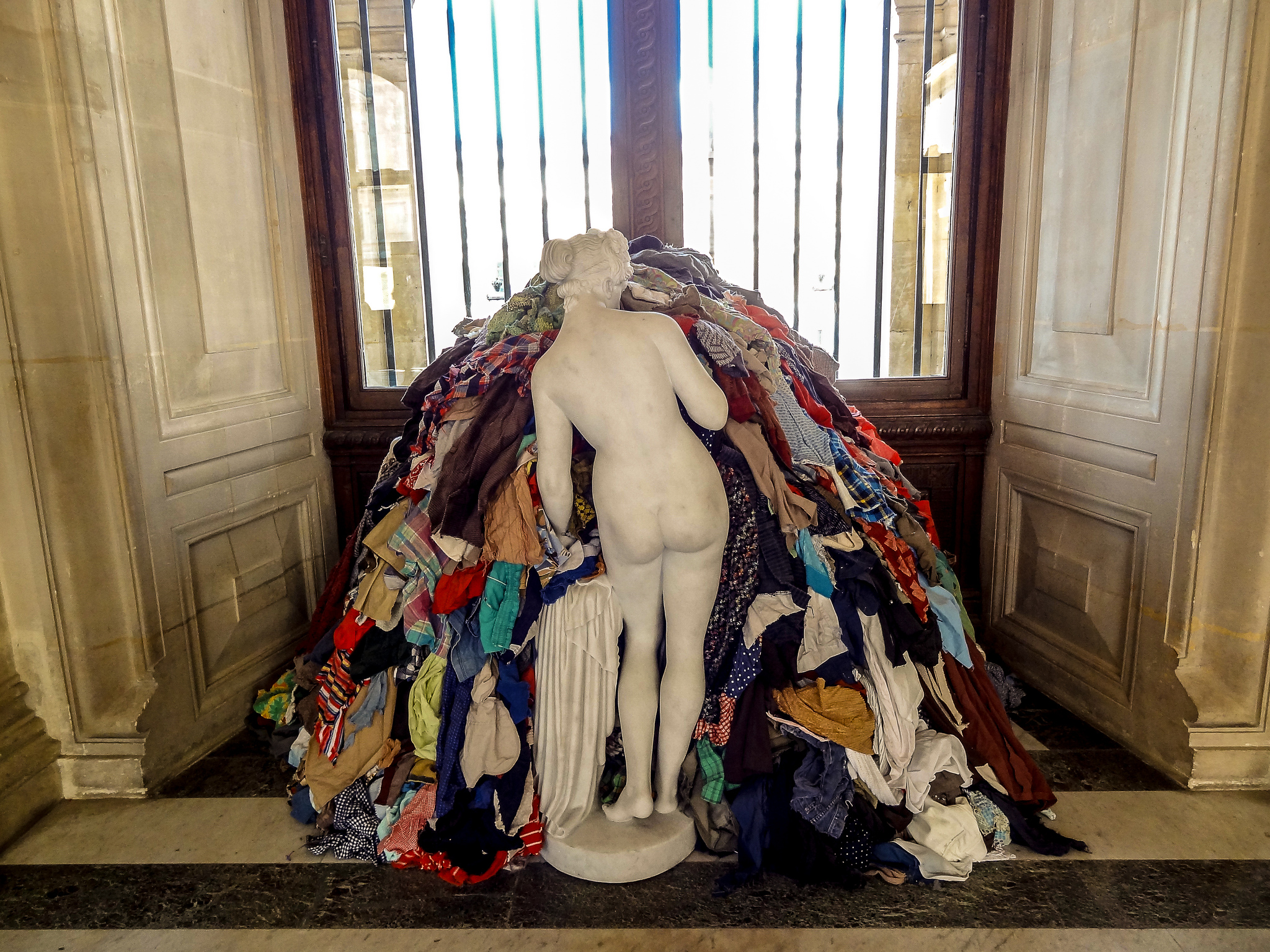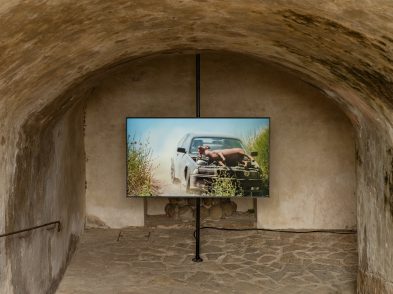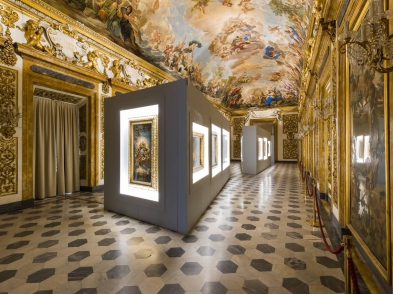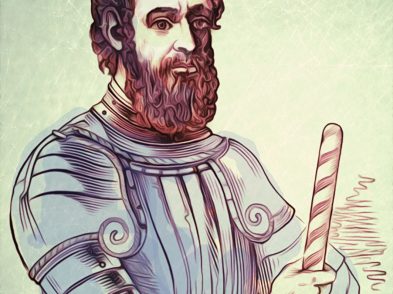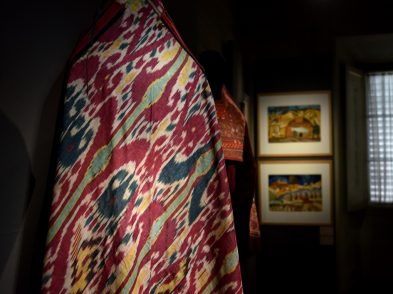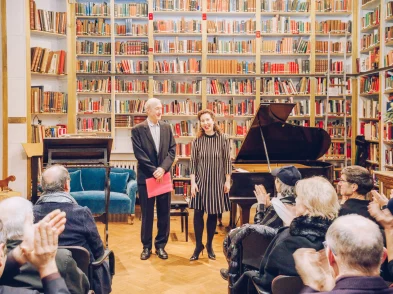Greeting pedestrians and motorists carefully negotiating busy traffic at the roundabout in front of Porta Romana is a tall marble figure who appears to look two ways at once. The sculpture is the work of Michelangelo Pistoletto, one of the leading exponents of Arte Povera, the Italian art phenomenon that grew from the radical avant-garde of the 1960s to become the cultural symbol of the nation’s 150 years of unity.
The weight of Italian art history sits particularly heavily on the nation’s contemporary artists. With many centuries of cultural achievement to contend with, the task of pursuing a radical new route or even a new visual language appropriate to modern times is immense. The shadow cast by the past is long and formidable.
Arte Povera, however, succeeded in making a deep and lasting impact on the world. This name has been seen and heard often in Italian cultural life in the past six months. Eight exhibitions charting different phases in the development of Arte Povera and its allies from overseas have taken place in museums around Italy between September 2011 and this spring. From Bologna to Turin, Rome, Milan, Naples, Bergamo and Bari, displays presented this phenomenon as a national asset worth celebrating along with the country’s 150 years of unity.
Arte Povera first appeared as an umbrella term unfurled over like-minded artists by the Genova-born critic Germano Celant in 1967. It became internationally recognised as both profoundly Italian in its aesthetic and groundbreaking in its implications for the diverse forms that modern sculpture could legitimately adopt.
These new ideas emerged in studios in Turin and Rome in the mid-1960s, not as a cohesive movement but as intersecting lines of research. Neither denying nor imitating their artistic heritage, the dozen or so artists identified by this phrase confronted a tumultuous era with artworks that were as philosophically searching as they were visually unprecedented.
The appearance of their work announced an intention to think differently about how an artist expressed ideas and reflected on the world. One of the most prominent poveristi, Michelangelo Pistoletto, posed penetrating questions with one sculpture that placed a marble figure of Venus, a representation of the classical ideals of beauty and order, in the midst of a multi-coloured heap of rags. Which element was closer to life ‘The statuesque goddess’ Or the scraps of cloth that once had practical functions-and still had work to do?
Just the attempt at comparison was controversial. But Pistoletto and his contemporaries were not mere sensationalists. Italy’s economic miracle, together with fundamental social changes and political tensions in the aftermath of World War II, were challenging traditional attitudes, while wide access to consumer products and the mass media appeared to distance people’s senses from the daily realities of existence.
The artists of Arte Povera were most commonly associated with the straightforward combination of materials from the home, landscape, market or workshop (hence the word ‘poor’, although the term was adapted from one already applied to expressive theatre). They channelled into objects and activities that defied easy classification and analysis that was as chaotic, dynamic and open as their time, place and heritage. While individual artists embraced the creative climate, a reconnection with naturalness, combined with a material’s metaphorical potential, was characteristic of their way of working.
In Rome, Greek-born Jannis Kounellis explored the interaction between organic and inert substances. He once perched a live parrot on a steel installation and, on a famous occasion, stabled 12 horses in a gallery in a daring reminder of the equestrian image in ancient civilisation. Working in the countryside outside Turin, Giuseppe Penone, the nephew of a woodcarver, teased the form of a sapling out of a machine-planed timber plank to ‘reverse’ technology through gesture.
A feature shared by all the artists was a desire to bind art to everyday facts and actions. Mario Merz was intrigued by the growth patterns found in nature, such as in the coil of a snail’s shell. He interpreted them in basic structures like igloos, one of the earliest forms of human shelter; and by very simply depicting in neon the progression of Fibonacci’s medieval number sequence, Merz implied the infinite continuity of thought and space.
Partly symptomatic of the European radical mood in the 1960s, Arte Povera also marked the recovery of the legacy of Italy’s pre-war avant-garde, especially Futurism. In an art world increasingly dominated by New York, Italy’s artists became the most prominent European exponents of a radical, conceptual outlook.
Nonetheless, they did not reject traditional materials and craftsmanship. In the huge Piedi sculptures by Luciano Fabro, although strikingly unusual in appearance, long-established glassmaking, casting and fabric skills were employed-as well as the people who knew how to practice them-to introduce contrasts of texture and colour that was reminiscent of the theatrical flourishes of the Baroque age.
Such fusions of old and new invariably accompanied an invitation for onlookers to examine their opinions. Pistoletto chose marble for the huge sculpture Dietrofront, exhibited in his major exhibition at the Forte di Belvedere in Florence in 1984. One reason was practical: it made possible the large-scale reproduction of a smaller version in resin.
But another reason was more polemical: Pistoletto queried the culture personified by resolute and authoritarian statues by creating his ‘anti-monuments.’ Standing now in piazzale di Porta Romana, the rough-hewn sculpture has one female figure looking away from the city and along via Senese. Meanwhile on her head balances, so precariously it could fall, a second figure whose gaze is fixed in the opposite direction, towards Florence.
Pistoletto showed again in Florence in 2010, when his mirrored interior, Metrocubo d’Infinito, was installed at Palazzo Strozzi. Visitors experienced their reflections multiplied endlessly on every side. The initially thrilling spectacle was followed by a keen sensation of being mentally liberated into a space where thought-a different type of reflection-was uppermost.
For decades, works by these artists and their fellow poveristi-Anselmo, Boetti, Calzolari, Marisa Merz, Paolini, Pascali, Prini and Zorio-have been avidly sought by private and public collectors. Since the mid 1980s, exhibitions devoted to the Arte Povera aesthetic have contributed to their increasing value at auction. Moreover, even though prime examples may be over 50 years old, the most resonant do not appear dated.
Indeed, two generations of younger artists, from America, Europe and China, have been influenced by their approach. That influence extends to the prevalence of installation among today’s most notable figures and to the development of performance and body art. In an era of widespread mechanisation and the retreat into cities (neither of which these artists reject), Arte Povera lives on to remind us of our connection with nature and of the poetry of Mediterranean myths that animate primitive instincts.

